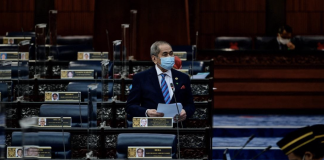KUALA LUMPUR, June 10 — The National Union of Teaching Profession (NUTP) Peninsular Malaysia has recommended that the earliest for primary schools to reopen nationwide, is in late September or October.
However its president Aminuddin Awang said, this was subject to the COVID-19 situation in the country as well as the decision of the National Security Council and Health Ministry (MOH).
“We hope that by the end of September or October, COVID-19 would have subsided to allow teachers and students to return to school as usual,” he said in a special Bernama 745 interview on Bernama TV today.
He said even though schools have not reopened, teachers still had to conduct online teaching and learning (PdP) from home throughout the duration of the Movement Control Order (MCO) and Conditional MCO.
“The teachers are always ready to report for duty to fulfill their responsibilities in providing education to students.
“In fact, some teachers have been recording certain subject syllabus or preparing specific modules to enable them to pass them to the students when school reopens as they do not want the students to miss out on any important topics.
In the meantime, Aminuddin also proposed that pedagogical aspects and standard operating procedures (SOP) of the learning and teaching system be improved whereby only four core subjects are taught in the classrooms while the rest are via virtual classroom learning.
In addition, he also suggested that school hours for the morning session be from 8am to 12noon while the afternoon session is held from 1pm to 5pm.
“NUTP is confident that with the diverse facilities and skill sets today, teachers will be able to realise this goal,” he said.
Today, Education Minister Dr Mohd Radzi Md Jidin announced that schools across the country would reopen from June 24, involving students who would be sitting for public examinations namely Sijil Pelajaran Malaysia (SPM), Sijil Tinggi Pelajaran Malaysia (STPM), Sijil Vokasional Malaysia (SVM) and Sijil Tinggi Agama Malaysia (STAM) as well as their international equivalents.



















